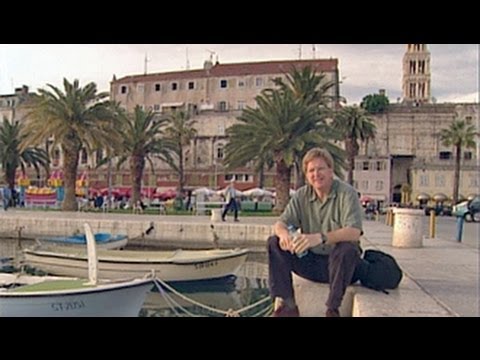
Nestled on the eastern shores of the Adriatic Sea, Split, the second-largest city of Croatia, offers a unique blend of ancient history and modern life. Renowned travel expert Rick Steves often highlights Split in his European travel guides as a must-visit destination for travelers seeking an immersive cultural experience intertwined with the rich tapestry of history. This vibrant city not only boasts of breathtaking natural beauty but also serves as a living museum with its well-preserved architectural marvels from various epochs.
#### Ancient Foundations
The heart and soul of Split is Diocletian’s Palace, a UNESCO World Heritage site that was originally built in the 4th century AD as a retirement residence for its namesake, Roman Emperor Diocletian. Today, this ancient palace forms about half the old town and stands as a prime example of Roman architecture. Over the centuries, the palace has seamlessly integrated itself into the fabric of the city with residents making their homes and businesses within its ancient walls. This fusion creates a unique architectural blend where past and present coexist harmoniously.
Walking through the narrow cobblestone streets within the palace walls offers an ethereal journey back in time. Rick Steves points out that travelers can explore various well-preserved remnants such as Diocletian’s Mausoleum, which later became the Cathedral of St Domnius, Jupiter’s Temple, and numerous medieval fortifications that speak volumes about Split’s layered history.
#### A Blend with Modernity
Beyond Diocletian’s Palace, Split unfolds into a dynamic modern city. The Riva waterfront promenade is one such contemporary charm which faces the harbor with trendy cafes and palm-lined walkways buzzing with locals and tourists alike. This scenic promenade encapsulates how Split remains at ease with its modern developments while proudly showcasing its ancient heritage.
Split’s local markets are another highlight where tradition meets today. Rick Steves advises visiting these vibrant markets to get a feel for daily Croatian life. The Pazar Market offers fresh fruits, vegetables and local delicacies while showcasing energetic interactions characteristic to Mediterranean marketplaces.
#### Cultural Delights
Culture thrives through various forms in this historic city from festivals celebrating everything from film to food. The annual Split Summer Festival draws attention globally by celebrating Croatian artistry with live performances held in open-air venues throughout July and August.
Moreover, museums like the Mestrovic Gallery honor Croatian sculptor Ivan Mestrovic through permanent collections housed in his former residence—an exquisite villa considered an artistic monument itself.
#### Gastronomic Journey
Split’s culinary scene provides an insightful angle into its cultural identity dominated by Dalmatian specialties known for their simplicity and freshness. Local dishes such as ‘Pašticada’ (Dalmatian beef stew), fresh seafood straight from Adriatic waters paired with local wines like Pošip or Plavac Mali create gastronomic joy rides recommended by Rick Steves.
#### Conclusion
Rick Steves’ Europe travel bite captures not just sights but essence; in context to Split he emphasizes experiencing it beyond mere sightseeing—suggesting engaging conversations with locals, savoring traditional cuisine or relaxing at one of Riva’s many café-bars watching life unfold in this picturesque setting.
For anyone venturing to explore Europe’s rich past intertwined with vibrant present-day cultures, Split stands out as an educational yet exhilarating stopover on Croatia’s Dalmatian coast that truly embodies what it means to be a modern city built on ancient roots.
